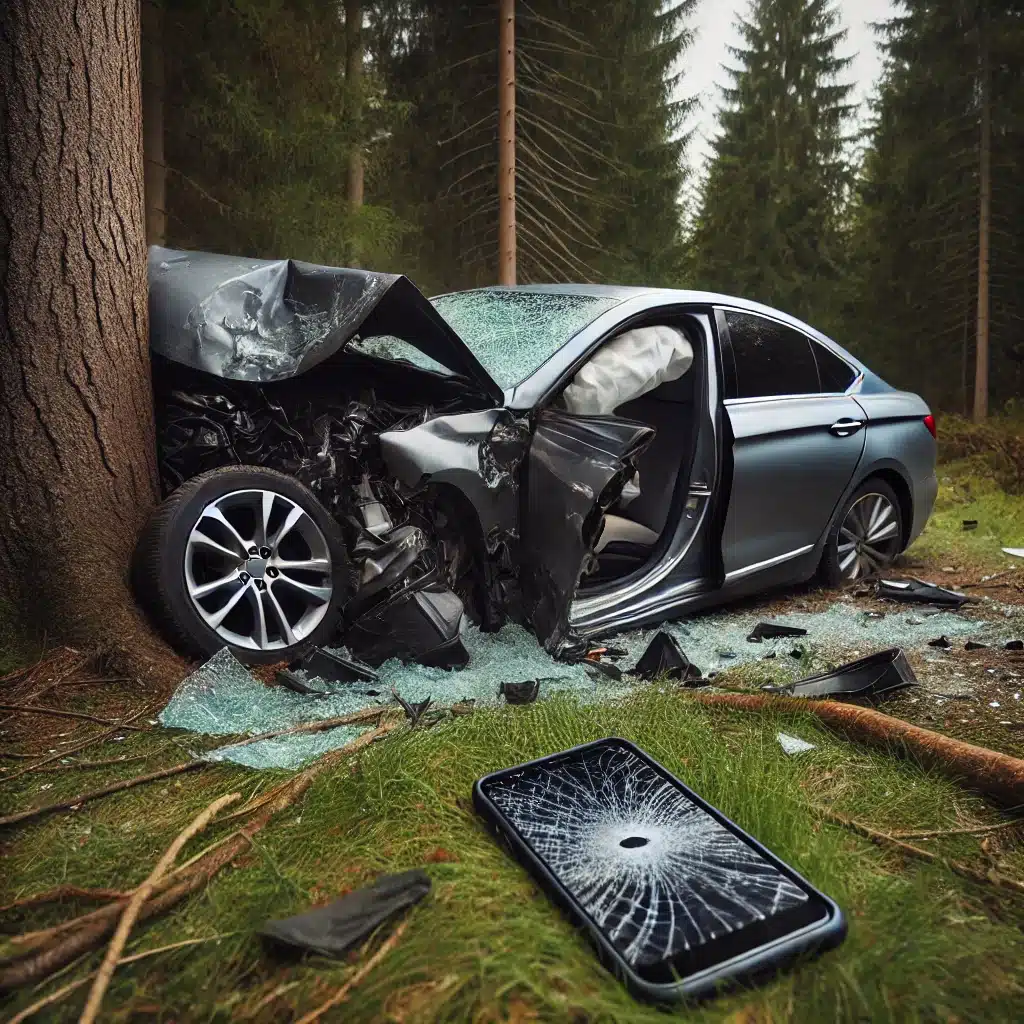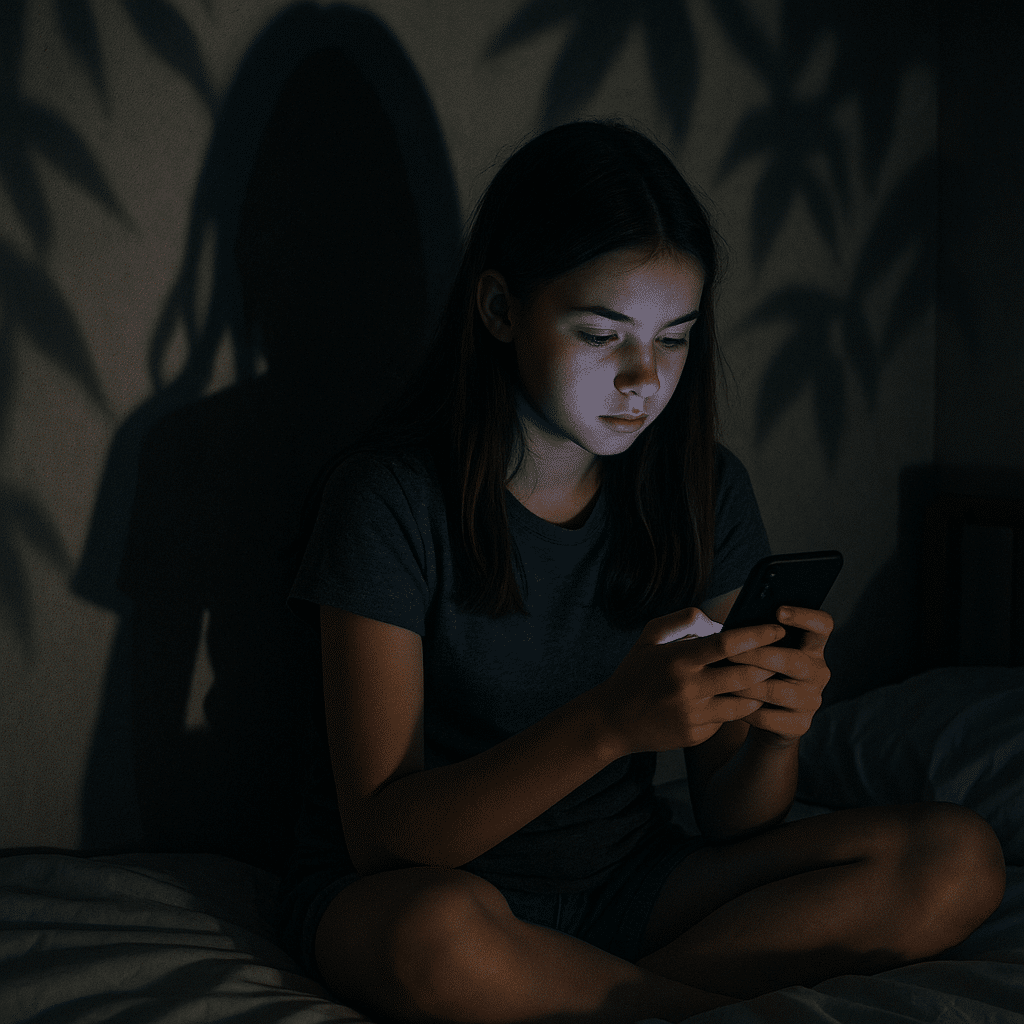
Did this really happen?
These days it’s tough to tell, because now AI generates even videos. What a sign of the times!
But can they bear legitimate messages?
In the case of a YouTube post about a woman (allegedly) named Julie Morgan Stevens, 18, of Milfield, Oregon, we’re not sure. Julie allegedly died on a night in February last year for nine minutes and thirty-two seconds after a car wreck.
We couldn’t find “Julie,” nor, as we can tell, is there a “Milfield” in Oregon. The closest we can come in that state is Mill City. There is a “Millfield” known for its rural setting and properties in Athens County, Ohio, along Oregon Ridge Road. Did the narrator (or A.I.) simply mix that up?
At any rate, back to the reported experience.
Cause of the accident?
Julie checking social-media on her cell phone as she drove. It’s said her car hit a tree, wrapping around it at a curve.

And whatever the veracity or lack thereof of this YouTube entry, it brings up a few needed points, starting with how beholden we all are now to that tiny supercomputer called a cell phone that we can no longer go anywhere without.
Did we say “supercomputer”?
An iPhone 15 or Samsung Galaxy S24 can execute over fifteen trillion operations per second thanks to advanced processors like the A17 Pro or Snapdragon 8 Gen 3.
This means a smartphone has more processing power than all of NASA’s computing resources combined during the Apollo moon missions.
That little device in your purse or pocket can do more than a room-sized computer in the 1990s.
“Julie” had her two or three hundred followers on Instagram, which “seemed like everything that mattered back then,” she recounted in the video.
Her phone had buzzed with an Instagram notification (a post by someone she “liked”), and that drew all her focus.
“Five seconds looking at my screen. That’s all it took.”
The next thing the young woman knew, there were horrendous sounds around her (metal crunching), and then she found herself floating.
That certainly sounds like an array of other such near-death experiences. She “watched” emergency responders pulling her out of his smashed car, putting her on a stretcher, and trying to revive her with frantic CPR, to no avail.
Yet to Julie, everything suddenly felt “okay–in fact, good like she had never felt before.
There was the famous “light.” It was of great brightness but, as we also commonly hear, didn’t bother the eyes. Instead it “felt like the love of everyone who had ever loved me all at once.”
That’s when she allegedly saw Jesus.
He was Light itself, somehow shaped like a person.
His Eyes were “filled with more love than I can describe,” she is quoted as claiming.
He knew every single thing about her–every action and thought.
It wasn’t frightening. When He pronounced her name, we are told, “it was like music, like He’d been waiting to talk to me my whole life.”
There were tears of relief and recognition; of having been lost her whole life without knowing it. “Walk with Me,” He supposedly said. “There’s something you need to see.”
Here’s where it gets particularly interesting, for He allegedly showed Julie scenes on what seemed like “thousands” of floating screens. On them she could see young people her age, all staring at their phones as she had when she crashed.
Her eyes were drawn to one particular screen that showed a girl even younger, about fourteen, studying her phone and looking sad as “dark shadows” gathered around her.
What were the shadows, she asked Jesus?
“They feed on comparisons,” Jesus supposedly responded. “On envy. On self-hatred. On the feeling of never being enough.”
On another screen was a boy who looked “maybe twelve” playing a violent game, his face blank. She felt that darkness around him also.
Shadows again, feeding on rage and revenge.
She saw others–not just kids, but also adults–all connected to their phones but disconnected from others and, again, surrounded by dark shadows, which grew larger with the dark emotions and thoughts they provoked.
These spirits have always been around, she claimed Jesus said, but never before have they had such easy access to minds and hearts.
She saw herself scrolling through Instagram instead of sleeping or staring at her cell phone during dinner while her mother was trying to talk to her. Think back at the last time you were in a restaurant!
“You’re not pretty enough. Look at how much better their life is. Nobody really likes you. You need more ‘followers.’ You need more ‘likes.'”
The whispering of demons.
Even if fiction, are there not profound messages? You were not created to scroll your life away. Noted one comment: “I deactivated my FB account and have no desire to reactivate. There is more peace and reality in my life.”
Oh, social media: isn’t it just everywhere, including the intricacies of our spirits? Now, Zuckerberg, mastermind of Facebook, wants everyone to wear computers as eyeglasses, seeing everything as “virtual,” interacting–he actually says this–more with AI than with fellow humans.
Blind leading the blind.
Now Julie saw what her staring at her phone had done: hospital scenes of her parents crying, her brothers slumped against or punching a wall.
Conversely, she was shown how when a young girl prayed, angels were energized and formed a shield around her.
The shadows retreated. Faces turned up to the sun, instead of down toward small screens. People reading actual books. Friends having real conversations. Were we going to choose this future or a future shadowland of A.I. “Just one sincere prayer,” Jesus supposedly said. “That’s all it takes to activate Heaven’s protection.”
But these days, with all our devices: who has time for prayer?
“Tell them I love them. Tell them I’m waiting to talk to them,” Jesus plausibly said, “if they’ll just look up from their screens long enough to listen.”
[see Michael Brown’s “special report” on high-tech]



